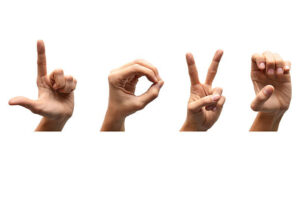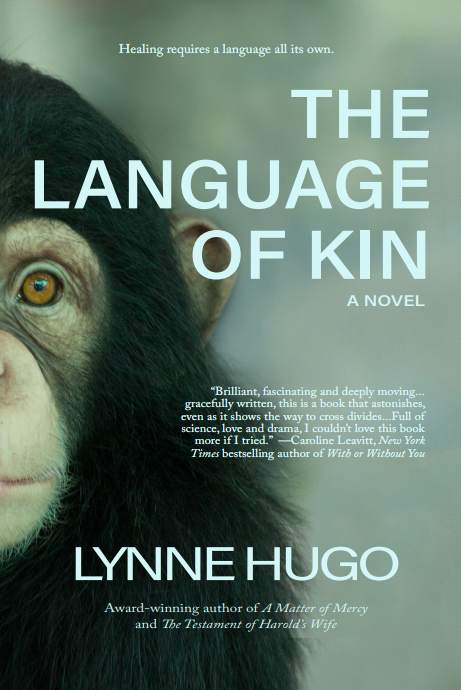 When I was a new teenager with caring but clueless parents, I used to ride my bike to crazy places on Connecticut’s hilly back roads. Older boys reckless with their shiny drivers licenses, considered those narrow roads their personal racetracks, small wildlife be damned. (I was positive they had cheated on their driver’s tests.) It would upset me so much to come upon a small animal that had been killed that I felt compelled to dismount, to find the fallen branches I’d need to gently move the little body to the woods that edged the road. There, I’d make a soft bed for it in the undergrowth, then cover it carefully with fallen leaves, saying how sorry I was, that it was a good animal. I cried often back then.
When I was a new teenager with caring but clueless parents, I used to ride my bike to crazy places on Connecticut’s hilly back roads. Older boys reckless with their shiny drivers licenses, considered those narrow roads their personal racetracks, small wildlife be damned. (I was positive they had cheated on their driver’s tests.) It would upset me so much to come upon a small animal that had been killed that I felt compelled to dismount, to find the fallen branches I’d need to gently move the little body to the woods that edged the road. There, I’d make a soft bed for it in the undergrowth, then cover it carefully with fallen leaves, saying how sorry I was, that it was a good animal. I cried often back then.
And while now I don’t stop my car in the middle of roads to move bodies, I still silently mouth how sorry I am when I see one. I don’t want animals hurt or suffering, it’s really that simple. If you’ve read my blog or my only nonfiction book (Where The Trail Grows Faint: A Year In the Life Of A Therapy Dog Team), you know how I am about my dogs, always rescues. I’ve always had a great interest in the human/animal connection, the meaningful bond between species and the healing power of that love.
But now, I also want to understand and respect the bonds other animals have within their own species that we humans often seem to disregard. This led me to think more deeply about communication in general, verbal and non-verbal. That, of course, brought me to sign language, too. I had a lot to learn. These were the questions that led me to write The Language of Kin. I wanted to create a dramatic story that would, through characters and action, show how we all struggle to communicate in different ways—how brilliantly we devise ways to succeed, how dismally we sometimes fail.
The novel will be published on July 11 (available for pre-order now!–more about why this is so helpful to a book another time). The story opens with a brief scene to let you know how Eve was captured as a still-nursing baby in Uganda, but it doesn’t linger there. Although there are short sections about her life during the years before she is finally transported to the Dayton, Ohio zoo (fictitious–there’s no zoo in Dayton), it quickly introduces you to the main human characters: primate expert Kate, who’s the Assistant Primate Curator, and Marc, one of the zookeepers in the primate department, and a rising star. We quickly learn that their beliefs about zoos couldn’t be farther apart: with the arrival of a traumatized chimp who needs to be integrated into the existing troop, a clash is inevitable. And clash they do. But, of course, in a novel that’s looking at communication as well as animal welfare, there needed to be something that also connected them, even might come to make them need each other.
So…Kate’s mother is in a retirement community. But she can’t stay in assisted living; it’s too dangerous for someone with primary aphasia. She has no dementia, but she’s lost the use of words and can’t process what staff tell or ask her. Marc’s mother is deaf and, for reasons in her own history, unwilling to become independent, as most deaf people learn to be.
dementia, but she’s lost the use of words and can’t process what staff tell or ask her. Marc’s mother is deaf and, for reasons in her own history, unwilling to become independent, as most deaf people learn to be.
And there’s an autistic zoo trainee, about whom all the staff care a lot.
What happens when there’s a life-threatening crisis at the zoo–at the same time that Kate’s own life is at a breaking point?
I hope you’ll order this novel and find out. Here’s what author Katrina Kittle (Morning In This Broken World, coming in June!) said: “…Hugo’s words are beautiful, but this riveting story shows us how words can often fail and forces us to see the many other ways we communicate. This novel is an emotional read, full of page-turning highs and cathartic sorrows. I fell in love with this complicated, compelling cast, human and otherwise.”
Now–since you’re here anyway, and thank you from my heart for that, I’d love it if you’d look at the navigation bar at the very top of this page and click on Home. That will take you right to my newly updated website where you can see what more authors have said and also, by clicking “About the novel” on that Home page, read the first couple of chapters of the novel. Also, you can click on “Behind The Scenes,” where you can read the rest of what led me into this novel, plus see gorgeous pictures of Eve the chimp’s first home in Uganda. (How could I not ask a dear photographer friend who went on a photo safari there late in 2022 if she’d let me display some? I think you’ll love Elizabeth G Brooke’s work as much as I do.)
Here are a couple of questions for you to answer in the comments section below: how do you like the cover? And…if you do go to the “About the novel” page of my website, does any one of the quotes from other authors attract you most? (It helps to know because the publisher can only feature one quote in advertising–this is why I’m asking your reaction.) You can also, always, ask me any questions. I respond to each comment.
Thank you, thank you!

On the page where her quote shares space with two others, I’d say Kittle’s is the clear winner. On the previous page where she’s up against only one other candidate, I feel it’s more of a toss-up. I’ll try to take another look on another day to see if I can decide between the two.
That said, at the rrisk of stating the obvious: What an embarrasssment of riches, Lynne! I trust you’re kvelling.
Thank you for the feedback, Preston! I appreciate your insights. You always have something helpful and supportive to say. Don’t forget to also look at Caroline Leavitt’s blurb–and Samantha Russak’s. I think they are included on the News And Events page. (The Events part is slowly being put together now.)
I’m afraid I’ll need more directions to find Leavitt and Russak. I found a page of blurbs about HAROLD’S WIFE, but no other books. (Irrelevant Non Sequitur: Call me fanciful, but I find myself musing on the possibilities which might pertain if instead of Samantha Russak blurbing it was comedian Samantha Bee. Then Caroline and Samantha could become partners in their own law firm, Leavitt, Bee.)
I get it, Preston. I think all the blurbs are written in full on the News page. I don’t entirely understand either, but apparently “reviews” are “News” and the web designer does this all the time and, unlike me, actually knows something about where things are supposed to be placed. Go figure, right?
Much looking forward to the book and soon putting my order in. In the meantime, the cover is engaging and I am especially drawn to the color and the golden eye. As to the three reviews, my favorite of the three is the first by Kittle. I didn’t much like the first sentence, but did like the emphasis on characters, “cast” in her terms, including the non-human, something not mentioned in the other two. The agency, not just objective presence, of the non-human character, is central to engaging with the novel it seems, and she includes that, reflecting as well the golden eye on the cover. The second lacks a sense of drama and action, as well as any nod to the non-human. The third is too breezy with the “F” alliteration leading to “flipping pages” which isn’t, I suspect, what you would want your readers to be doing. Good luck with it all and cheers!
Michael, I really appreciate this input. I know that it’s an act of genuine generosity and support for another author to read a novel (often one that’s accepted and edited but not even in a bound Advance Reader Copy (galley) edition yet and then, if he or she likes it a lot, to write a blurb that will always appear with any editions of that novel as an endorsement. I’m really grateful when an author does it. Still, usually just one goes on the cover (the editor’s choice) and one, occasionally two, often redacted, on the back and any others inside, and we hope, in their full versions so the intent of the contributing author is clear. And in an ad, as I mentioned, another difficult choice: which is going to sell the book best? That’s where feedback like yours is so helpful!
I’m really glad you like the cover! The designer came up with two and sent them out to the team for votes. The other one was also really lovely, title and author (and a blurb) against lush rainforest greenery. But this one was everyone’s choice right away–the appealing expression of the chimp with her eye contact, and I saw an implicit appeal conveyed in that steady gaze. I hope other people will also love it! (The final cover is always the publisher’s decision. I’m not sure most readers know that. When I meet with book groups in person and zoom, I’m often asked, “How did you pick the cover?” and people are surprised by the answer.
I DO like the cover–a lot!–and so interested that you asked. I just finished Ann Patchett’s These Precious Days in which she devotes one essay to the choice of cover design and art. Funny that you too should want input on the same subject. Congrats on this publication, Lynne!
Karen, thank you so much for the feedback! I’m so glad you like the cover a lot. We know that covers often sell novels–whether they should or shouldn’t! So, I think a cover that conveys the feel of a novel and something of the subject matter as well as the tone is really important. In this case, to me, the designer hit it just right: an appealing animal, warm colors, a serious (as opposed to humorous or lighthearted tone) tone. And I know what you mean about Ann Patchett’s essay collection: isn’t it wonderful? I’m hoping that you’ll review this novel when it publishes in July–I’ve always loved your reviews. So articulate and on point. Thanks for commenting!
I actually liked Donna Everhart’s comment, although the others are fine too! I think most of us go to many lengths for people we love. I am looking forward to reading your new novel. As I have mentioned in other reviews, your books always teach me something new, or give me a new perspective.
For some reason, my first attempt to comment did not work. So I will try again. I actually like Donna Everhart’s comment. I think we go to many lengths for the people we love. I am looking forward to reading Language of Kin. I always learn new information from each of your books.
Wendy, thank you so much! your first attempt appears to have come through just fine! But I’m always appreciative of anything you have to say. I think each of the blurbs does pick up on something different, and I’m grateful for each.Thank you for the feedback!
I’m so glad you like learning from a novel–I do, too, and, of course, the trick is to embed a world that’s new to the reader in a gripping story. That’s what I try to do and I’m really happy it works for you.
I thought the quote from Kittle was the most appealing. It seemed a bit more specific and captured the novel’s breadth. I also like the cover. I am always drawn to the faces of the great apes. Look forward to reading this.
Oh, thank you for the feedback, Sue! And I’m so glad you like the cover and that particular quote. I like its specificity, too, which is hard to capture in a brief comment for a book jacket. I know my editor has gone back and forth a lot about what to put on the front and back covers. I think there are many difficult issues raised in the novel, which I hope will give it broad appeal to book clubs, too, and I think there’s going to be some mention of book club discussion questions (into which I actually put a lot of work) being included. Thanks again for your thoughts.
Beautiful, beautiful and more beautiful. I can’t wait to read this one. You know I love the cover. Author endorsements are great, but I don’t need them to know I’m going to love your work. 😉 I’m a little afraid to read this! You’re going to make me cry, aren’t you. You horrible woman!
Well, Terri-Lynne DeFino, maybe I’m going to make you cry some sad, some pissed-off, and some happy tears, just like your last novel did to me. And…now I’ve just bought your latest, Varina Palladino’s Jersey Italian Love Story, which is has 5 star critical reviews crawling all over it, and I expect you’ll do it again as you take me on another emotional ride, so you’re hardly one to talk. But I’m thrilled that you love the cover and if you’re worried about tears, yes, be afraid, be very afraid, but read it and review it for me! I hope you love the novel as much as the cover.
The cover! Love it. It’s arresting and hypnotic. It’s the perfect lead-in to the opening chapter, which leaves me as breathless as if I’d been chased and captured. After just reading these opening chapters I can see the reach of this story. I’m betting that it will draw me back to fiction, which I’ve overlooked lately in favor of more serious non-fiction. This is more than just a good read. My book group could talk on and on about the metaphor of the caged chimp and the mother who will be trapped in a room at a care facility.
As for the blurb, I’m going against the prevailing votes in favor of the Leavitt. I like her emphasis on “crossing the divides” which this book does in all sorts of ways. It’s also smart to mention science. That shows the level of research that’s gone into this book.
And I have to mention the writing–lush and vivid. Excerpts should be used in an MFA class to show how masterfully description can be done.
Oh Debra, I hardly know how to respond to such generous praise! Thank you for such careful reading. I’m always grateful for your input. I love that this novel might draw you back to some serious fiction, too! Thank you again!
The cover! Love it. It’s arresting and hypnotic. The perfect lead-in to the opening chapter, which leaves me as breathless as if I’d been chased and captured. After just reading these opening chapters, I can see the reach of this story & its intelligence. I’m betting it will draw me back to fiction, which I’ve overlooked lately in favor of more serious non-fiction. This is more than just a good read. My book group, for instance, could talk at length
about the metaphor of the caged chimp and the mother who will be trapped in a room at a care facility.
As for the blurb, I’m going against the prevailing votes in favor the Leavitt. I like her emphasis on “crossing the divides” which this book does in all sorts of ways. It’s also smart to mention science. That shows the level of research that’s gone into this book.
And I have mention the lush writing. Excerpts should be used in an MFA class to show how masterfully description
can be done.